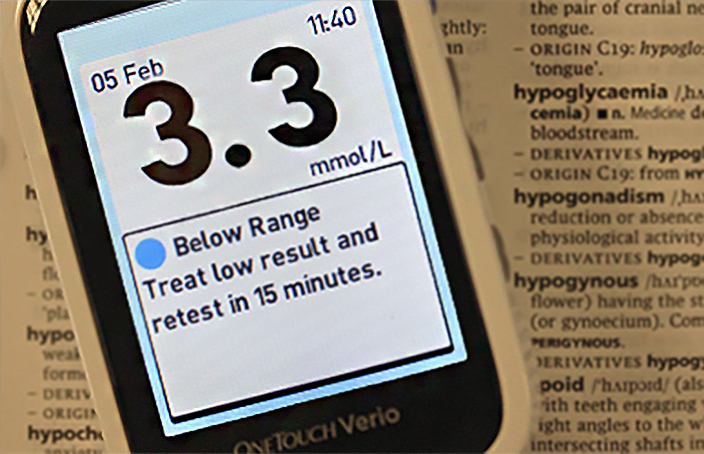I count myself as lucky in that I’m able to spot the signs of hypos, but it wasn’t always this way, and I went through a number of years with lost hypo awareness that made severe hypos a ticking time bomb in my life.
There’s no good time to have a severe hypo but there are certainly times that are worse than others. Having seizures at work were amongst the worst cases for me.
Mistakes
I made a number of diabetes management mistakes, but the trouble was that I wasn’t aware I was making such mistakes.
I’d blame the signs of hypos on other things. Taking ages to get things done, making mistakes, struggling to stay focused. These things were happening so often, I’d accepted them as normal.
“I’m just tired today” was a common reason I’d give. A constant series of high and lows through each day left my sleep pattern in tatters and, not surprisingly, I ended up being really tired.
Not only was I tired through each day, another problem was lurking. Severe hypos were waiting in the wings.
Tiredness is one of the main hypo symptoms, but I was tired in another way too. I was tired of testing all the time and tired of getting rubbish results with no apparent patterns.
By not straight away putting the tiredness down to a hypo, I was letting hypos develop too long. This meant sugar levels were getting close to danger levels and every now and again a severe hypo would strike.
The longer time I spent at low sugar levels, the less able I was to spot and rely on hypo signs. Looking back, I have to admit I was getting some signs. Tiredness and not being able to work at full strength should have been signs which I’d spot more easily today.
The more hypo awareness I lost, the later I would get signs, and also the signs I got would change. One of the more unusual symptoms was a buzzing in my ears which would usually give me about two minutes to get some sugar. The next symptoms would be a sudden sense of strong panic quickly followed by a seizure.
Beating the hypos
I did get my hypo signs back. The following things all helped:
- Spending a couple of weeks writing down my results and notes in detail
- Spending more time on carbohydrate counting and what insulin dose to take
- Not reacting and over-reacting to highs and lows
- Going on a DAFNE diabetes education course
- Testing between meals
- Finding a great partner who was able to spot my hypo signs sooner than I
I’d been guilty of chasing results. All too often I’d feel pretty bad and, not knowing whether I was too high or too low, I’d do a test and find I was over 17 mmol/l. I’d then put in too a big insulin dose as I didn’t know some of the basic rules of insulin dose adjustment. The DAFNE course certainly helped out with this.
Testing between meals was made easier by the fact that I’d recently started low carbing so I wasn’t having to face a string of numbers above 14 mmol/l, which was good for my general confidence.
Making a real effort to prevent hypos meant I made some good initial progress in the first few weeks and, as I built on this initial success over time, my problems with hypos reduced to no major problem over the next year.
Back in the early 2000s, I could have really done with taking the Hypo Awareness Program to give me a set of rules and techniques to steer clear of hypos.
If you’re finding hypos a struggle, join up and implement as much of the guidance as you can.




